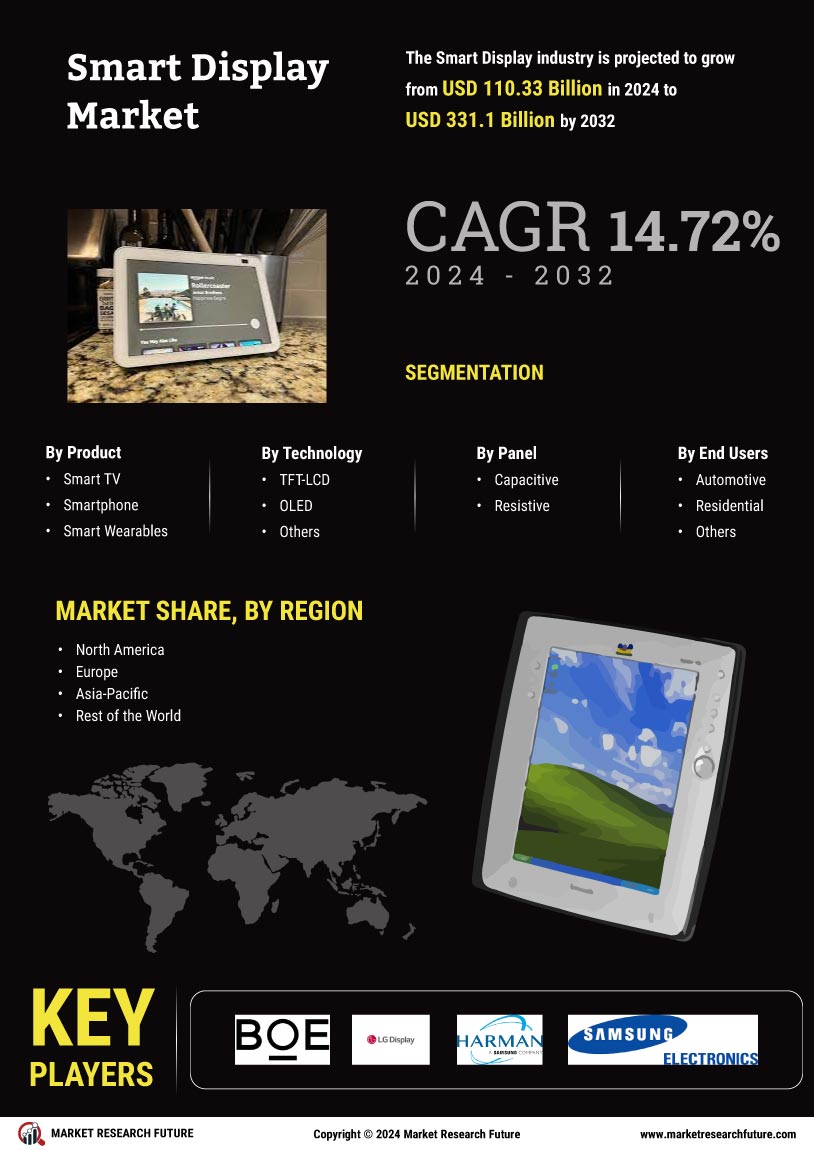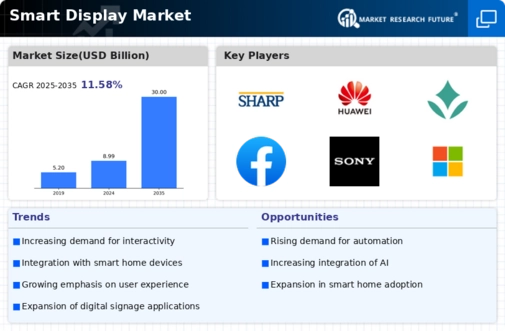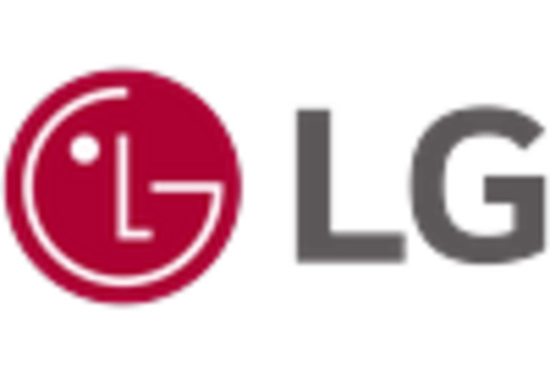Advancements in Display Technology
Technological advancements in display technology are significantly influencing the Smart Display Market. Innovations such as OLED and 4K resolution are enhancing the visual experience, making smart displays more appealing to consumers. The introduction of touchless interfaces and voice recognition capabilities further elevates user interaction, allowing for a more intuitive experience. Market data suggests that the demand for high-resolution displays is expected to grow by approximately 20 percent annually, reflecting consumers' desire for superior image quality. As manufacturers continue to invest in cutting-edge display technologies, the Smart Display Market is likely to see increased competition and product differentiation, ultimately benefiting consumers.
Rising Demand for Smart Home Devices
The Smart Display Market is experiencing a notable surge in demand for smart home devices. As consumers increasingly seek to enhance their living environments with interconnected technology, smart displays serve as central hubs for controlling various smart home functionalities. According to recent data, the smart home market is projected to reach a valuation of over 150 billion by 2025, indicating a robust growth trajectory. This trend is likely to drive the adoption of smart displays, as they offer seamless integration with other smart devices, thereby enhancing user convenience and experience. The Smart Display Market is poised to benefit from this growing consumer interest, as more households embrace smart technology to improve their daily lives.
Increased Focus on Health and Wellness
The Smart Display Market is increasingly aligning with the health and wellness trend, as consumers seek devices that promote a healthier lifestyle. Smart displays are being integrated with health monitoring applications, enabling users to track fitness metrics, manage diets, and access wellness content. This shift is supported by data indicating that the health and wellness market is projected to reach 4.2 trillion by 2025. As consumers prioritize their well-being, the demand for smart displays that facilitate health-related functionalities is likely to rise. This trend presents an opportunity for manufacturers within the Smart Display Market to innovate and cater to the evolving needs of health-conscious consumers.
Growing Popularity of Streaming Services
The Smart Display Market is witnessing a growing popularity of streaming services, which is driving the demand for smart displays. As more consumers subscribe to platforms such as Netflix, Hulu, and Amazon Prime, the need for devices that can deliver high-quality streaming content becomes paramount. Recent statistics indicate that the number of streaming subscribers is expected to surpass 1 billion by 2025, creating a substantial market for smart displays that can support these services. This trend suggests that manufacturers may focus on enhancing the multimedia capabilities of their smart displays, thereby positioning themselves favorably within the Smart Display Market.
Expansion of E-commerce and Online Shopping
The Smart Display Market is benefiting from the expansion of e-commerce and online shopping. As consumers increasingly turn to digital platforms for their shopping needs, smart displays are emerging as valuable tools for enhancing the online shopping experience. Features such as voice-activated shopping and personalized recommendations are becoming more prevalent, making it easier for consumers to make purchases directly through their smart displays. Market analysis indicates that e-commerce sales are expected to reach 6.5 trillion by 2025, suggesting a significant opportunity for smart display manufacturers to tap into this growing market. This trend indicates that the Smart Display Market will likely continue to evolve in response to the changing retail landscape.
















Leave a Comment